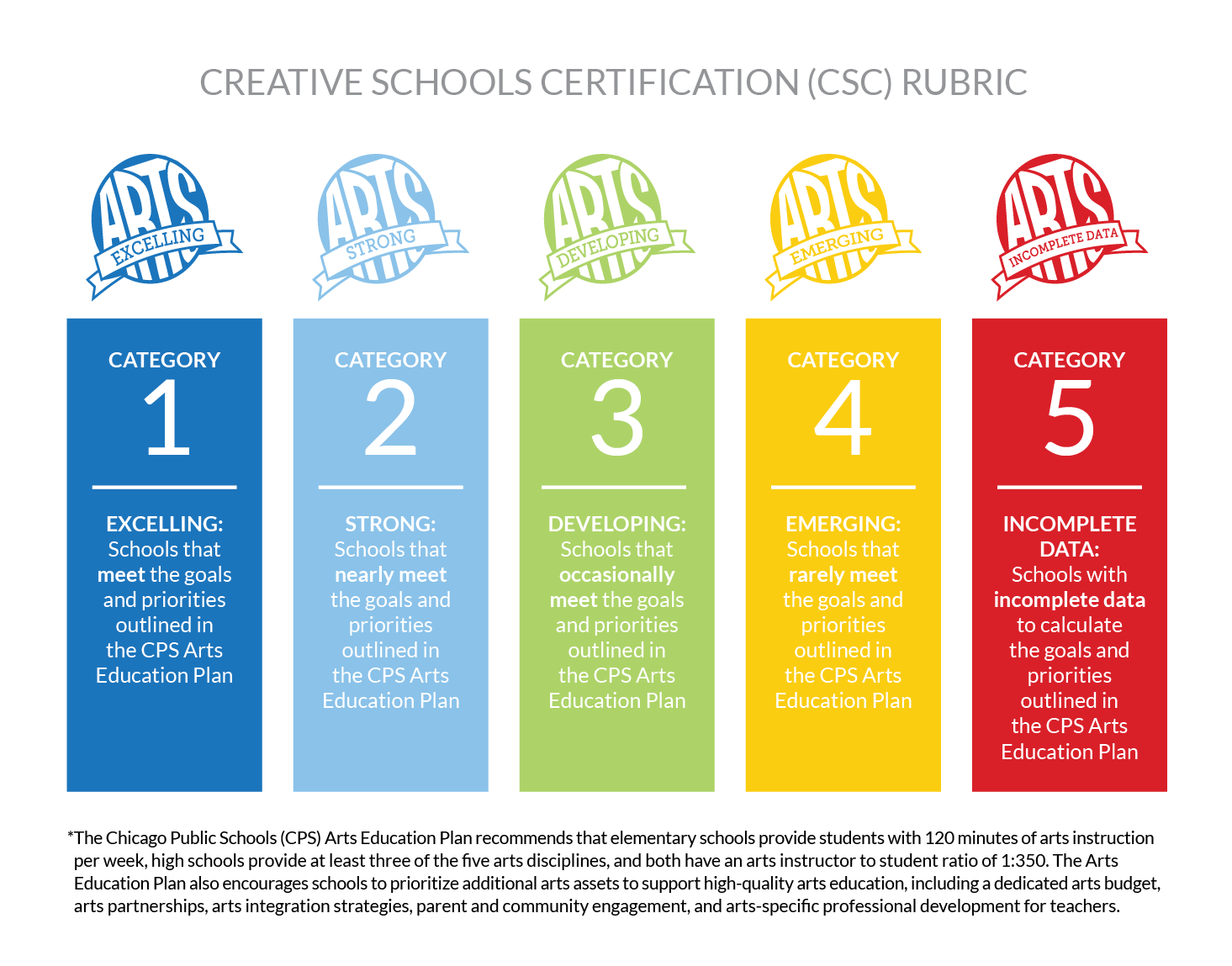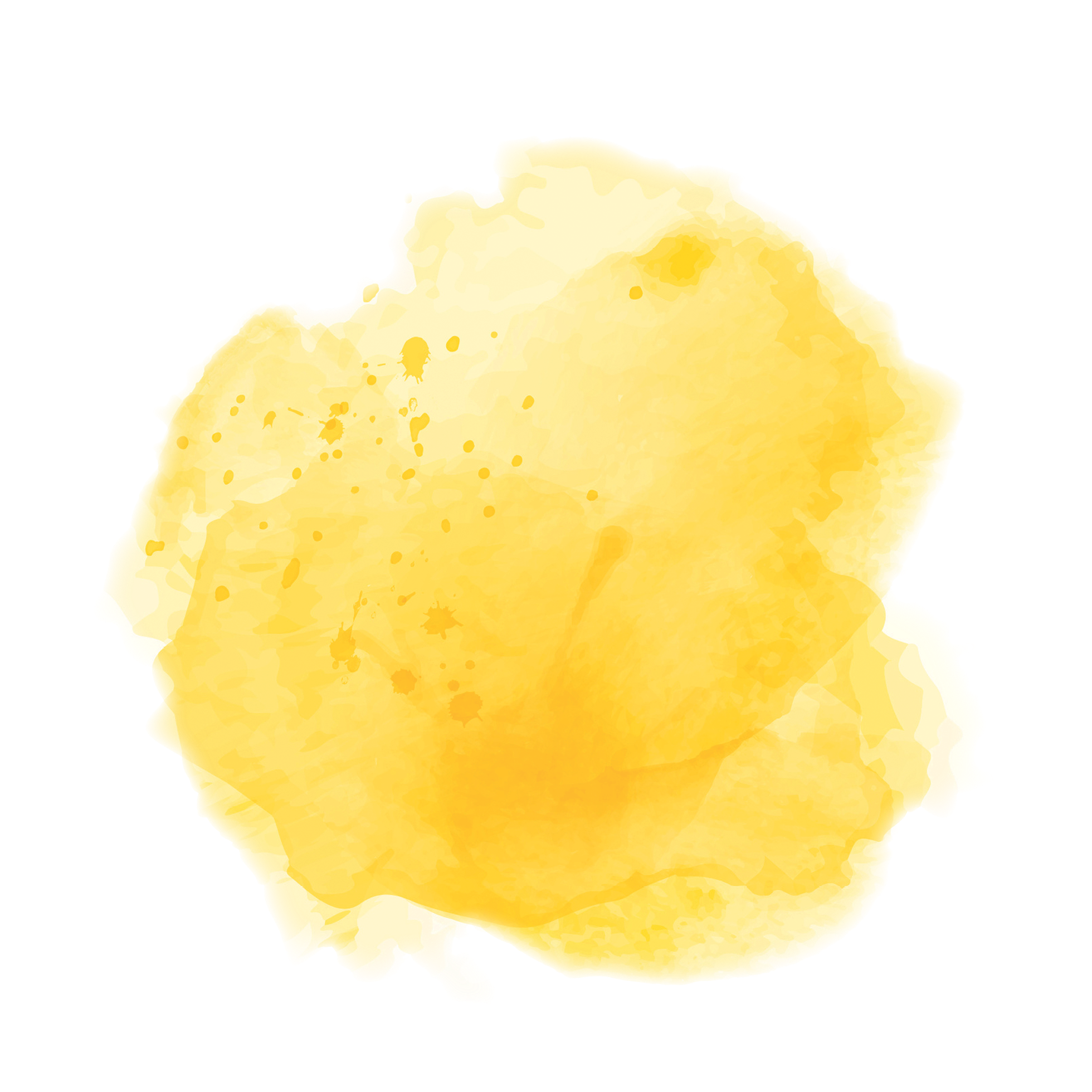

Creative Schools Certification
Since the 2012-13 school year, the CSC has served as a shared measurement system for the school district and arts education sector, providing valuable insights that inform resource allocation and drive data-informed strategies that expand equitable access to the arts.
The CSC is the result of a collaboration between Ingenuity and the CPS Department of Arts Education, with years of input from numerous stakeholders including principals and teachers. The Creative Schools Certification (CSC) provides a comprehensive summary of the access to and quality of arts education in every CPS school. Schools are rated on a five-level scale, and each school’s CSC rating is included on their CPS school profile. Excelling schools are those that meet the goals and priorities outlined in the 2012 CPS Arts Education Plan.
Data & Methodology
Data for the CSC is collected annually in the fall, reflecting the previous school year. It combines CPS administrative data along with survey responses from the Arts Liaison at each school. Arts Liaisons, who are principal-nominated, serve as the school’s arts champion and are often arts instructors, though they may also be administrators. This Creative Schools Survey is administered by Ingenuity on behalf of the CPS Department of Arts Education. Since the 2016-17 school year, over 90% of all 600+ CPS schools, including charters and contracts, have submitted annual arts education data.
A school’s rating is made up of Access and Quality elements that aim to determine students’ access to arts education and arts opportunities provided by each school. Access elements capture more resource-intensive arts investments related to a school’s provision of access to arts education opportunities. Quality indicators measure how a school creates and sustains the conditions needed to bring rich arts learning opportunities to its students, such as learning standards usage and partnerships with arts organizations.
The Access elements, taken together, account for 64 out of 100 available points in the CSC and measure:
- Arts instructor staffing levels
- Average weekly minutes of arts instruction (among elementary schools)
- Share of students who have access to the arts (among elementary schools)
- The number of disciplines and depth of instruction offered in those disciplines (among high schools)
The Quality elements, taken together, account for 36 out of 100 available points in the CSC and measure:
- Arts learning standards alignment
- Representation of the arts in individual school governance structures
- School budget for the arts
- Partnerships with external arts organizations and teaching artists
- Participation in arts-specific professional development
- Opportunities for family and community engagement
- A thoughtful and planned approach to instruction in the arts
The second iteration of the Creative Schools Certification (“CSC 2.0”) was implemented starting in the 2019-20 school year and leveraged more administrative data for Access elements, and also expanded the Quality elements noted above. A detailed description of all changes from the original CSC 1.0 to CSC 2.0 can be found here.
View the CSC 1.0 Rubric (2012-13 through 2018-19)
View the CSC 2.0 Rubric (2019-20 – current)
Data Reporting & Activation
The CSC provides a pathway for schools to improve their arts offerings while also providing Ingenuity, CPS, and other arts education stakeholders with actionable data to help strategize arts education planning, more deeply understand the arts education landscape, and leverage existing resources and partner relationships to enhance arts education initiatives.
Data from the Creative Schools Certification is publicly available through artlook®, Chicago’s leading web-based platform for CPS arts education data, designed to foster collaboration and ensure every student has access to high-quality arts education. CPS schools have their Creative Schools Certification ratings published each year on their official CPS school profiles.
Every CPS school that submits arts education data in the fall receives their custom Creative Schools Roadmap in December. These reports outline a school’s CSC rating and performance on each metric, alongside comparisons to other schools within its CPS network and across the district. These reports highlight strengths, identify opportunities, and offer tailored recommendations and supports to help schools improve on the CSC.
In April, sector-level trends and analyses are published in the annual State of the Arts. The State of the Arts encompasses a report, dashboard, and toolkit that provide the most comprehensive landscape analysis of arts education.
Throughout the year, ratings and underlying data from the CSC is used across the sector to inform strategy and decision making, as well as internally at Ingenuity with supporting schools through the Creative Schools Fund.
